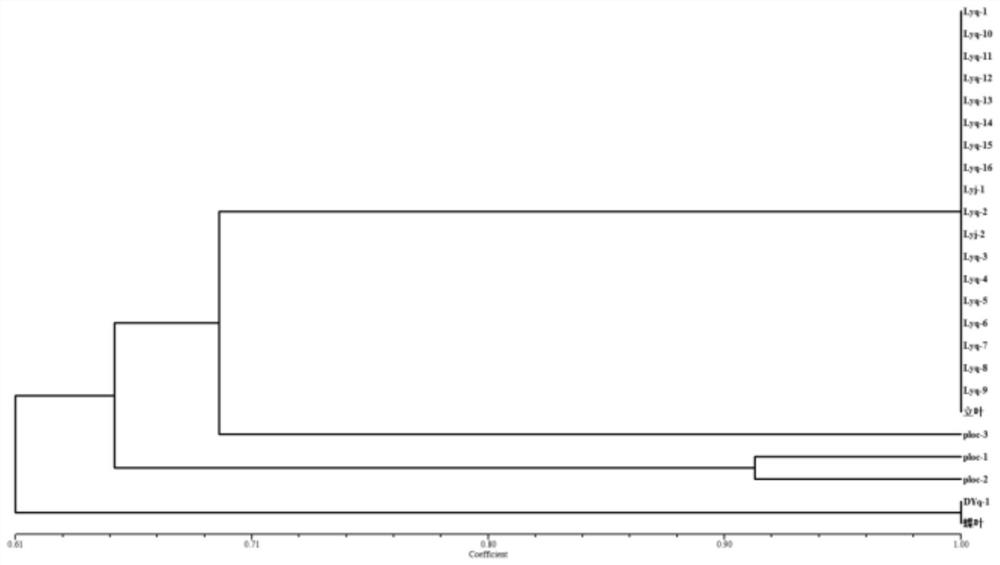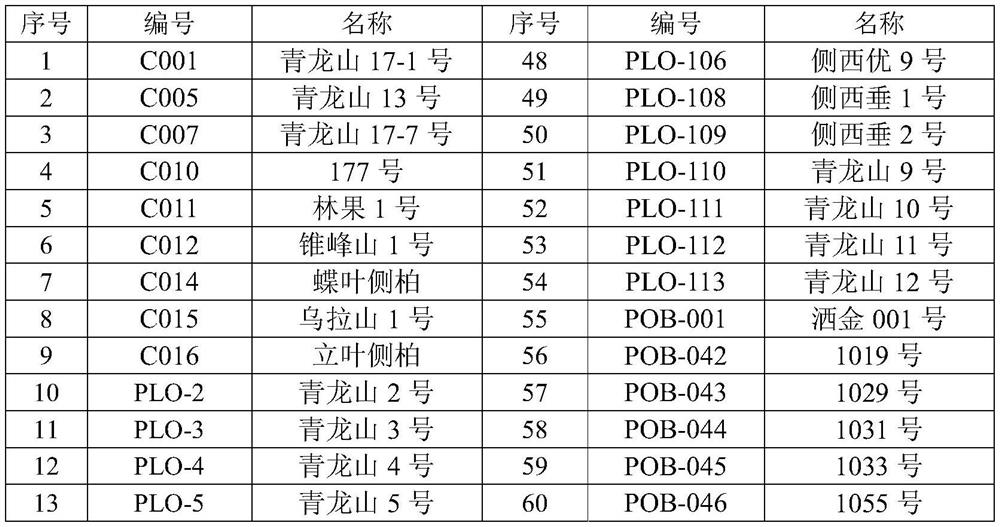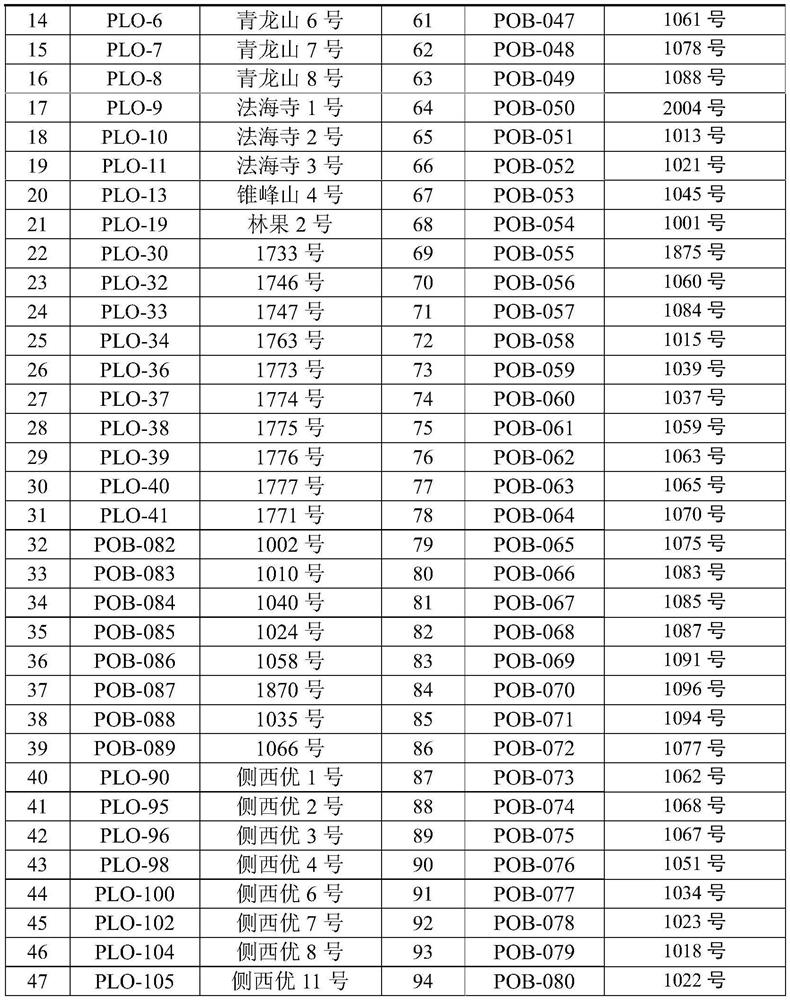EST-SSR marker primer developed based on platycladus orientalis transcriptome sequence and application of EST-SSR marker primer
A technology of sequence and orientalis, applied in the field of plant molecular markers, can solve the problem of less molecular markers of orientalis microsatellites
- Summary
- Abstract
- Description
- Claims
- Application Information
AI Technical Summary
Problems solved by technology
Method used
Image
Examples
Embodiment 1
[0082] Embodiment 1, development and screening method of orientalis EST-SSR primer set
[0083] 1. Primer development and design method
[0084] According to the sequencing data of the transcriptome of Arborvitae, MISA (Microsatellite) software was used to search for SSR sites, and the search criteria were set as: single nucleotide, dinucleotide, trinucleotide, tetranucleotide, pentanucleotide and Hexanucleotides, the minimum number of repetitions of each nucleotide is 10, 6, 5, 5, 5, 5, respectively. Then, the Primer 3.0 primer batch design program was used to design primers for the Unigene sequence containing the SSR site, and the length of the SSR site sequence was 17-28bp. The main parameters for primer design are as follows: the annealing temperature (Tm) is between 50-65°C; the size of the PCR product is 100-500bp, and the GC content is 40-60%.
[0085] 2. Polymorphic primer detection method
[0086] 1.1 Test materials
[0087] The test materials were the leaves of 4 a...
Embodiment 2
[0135] Embodiment 2, a kind of method utilizing the polymorphic EST-SSR marker primer provided in embodiment 1 to analyze the genetic diversity of arborvitae germplasm resources
[0136] Utilizing the EST-SSR labeled primers of PoE9, PoE64, PoE74, PoE84, PoE85, PoE89, PoE97, PoE105, PoE133, PoE139, PoE166 screened out in Example 1, 94 parts of arborvitae species were amplified by capillary electrophoresis with fluorescent primers The EST-SSR molecular markers of the germplasm materials, 94 arborvitae germplasm materials include arborvitae varieties (clones) and their cultivars weeping arborvitae, Sa Jinbai, the specific numbers and names are shown in Table 1.
[0137] The 94 germplasm materials of Thuja arborvitae in Table 1 were all sourced and preserved in the Thuja arborvitae germplasm resource nursery of the Institute of Forestry and Fruit Trees, Beijing Academy of Agriculture and Forestry Sciences. Capillary electrophoresis was used to detect the size of fluorescent PCR p...
Embodiment 3
[0159] Embodiment 3, a kind of method utilizing the polymorphic EST-SSR marker primer provided in embodiment 1 to identify the genetic relationship of arborvitae germplasm resources
[0160] Utilize the EST-SSR labeled primers of PoE9, PoE64, PoE74, PoE84, PoE85, PoE89, PoE97, PoE105, PoE133, PoE139, PoE166 that are screened out in embodiment 1, adopt fluorescent primer capillary electrophoresis to amplify the known species of arborvitae EST-SSR molecular markers of 'Arborvitae', 'Arborvitae' and their vegetative offspring, and three clones of Arborvitae to be tested. The above materials are all sourced from the oriental cypress germplasm resource nursery of the Institute of Forestry and Fruit Trees, Beijing Academy of Agriculture and Forestry Sciences. Capillary electrophoresis was used to detect the size of fluorescent PCR products, Popgene32 was used to statistically analyze genetic diversity, and Ntsys2.10 was used to construct a phylogenetic clustering map. Specific step...
PUM
 Login to View More
Login to View More Abstract
Description
Claims
Application Information
 Login to View More
Login to View More - R&D
- Intellectual Property
- Life Sciences
- Materials
- Tech Scout
- Unparalleled Data Quality
- Higher Quality Content
- 60% Fewer Hallucinations
Browse by: Latest US Patents, China's latest patents, Technical Efficacy Thesaurus, Application Domain, Technology Topic, Popular Technical Reports.
© 2025 PatSnap. All rights reserved.Legal|Privacy policy|Modern Slavery Act Transparency Statement|Sitemap|About US| Contact US: help@patsnap.com



